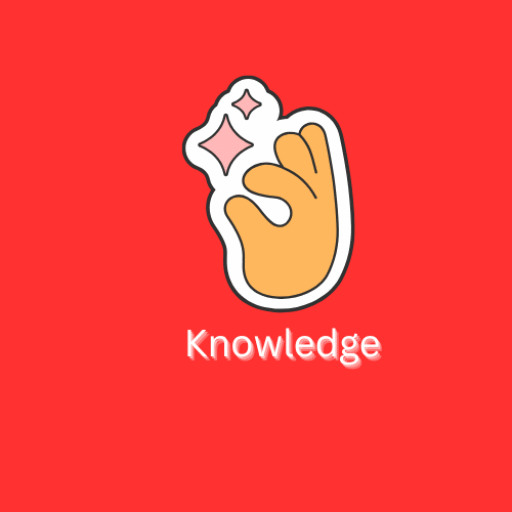Introduction
In today’s world of data abundance, finding reliable, structured, and insightful information can feel like chasing smoke. Traditional search engines return millions of results, but not necessarily the right answers. That’s where Seekde comes in — an emerging platform that reimagines how we find and connect knowledge in the digital age.
Seekde isn’t just another search engine. It’s a semantic discovery system designed to understand meaning, context, and relationships between concepts. Instead of ranking web pages by keywords, Seekde focuses on understanding the intent behind your search and delivering structured knowledge.
This article explores what Seekde is, how it works, its key features, advantages, and challenges. You’ll also discover how Seekde compares to existing search engines and why it could represent the future of human-AI knowledge interaction.
What Is Seekde?
Etymology & Concept
The name Seekde likely stems from “seek” (to search or explore) and “de” (short for digital, discovery, or data). Together, they represent a digital ecosystem for intelligent seeking — or, as some describe it, “the discovery layer of the web.”
Unlike typical engines that match words, Seekde seeks understanding. It’s built on natural language processing (NLP), semantic indexing, and knowledge graph mapping, allowing it to decode meaning rather than just matching phrases.
Definition
Seekde can be defined as:
A next-generation AI-driven search and knowledge discovery platform that organizes information by meaning, not by keywords.
Where Google organizes results based on popularity and SEO ranking, Seekde organizes knowledge — clustering related ideas and showing how topics connect. It’s less about “finding a page” and more about “understanding a subject.”
How Seekde Works
Seekde’s core workflow includes:
- Understanding the query — using NLP to analyze context and intent.
- Fetching data — aggregating results from multiple verified data sources.
- Building connections — creating a knowledge graph linking related topics.
- Generating summaries — condensing insights into concise, readable answers.
- Learning over time — adapting results based on user interaction and preferences.
This layered architecture makes Seekde both dynamic and context-aware, a leap forward compared to static, keyword-based engines.
Key Features & Functional Components
Semantic Understanding & Context Awareness
Seekde excels at interpreting the meaning behind user queries. Through semantic parsing, it identifies intent, entities, and contextual nuances.
- Understands synonyms, relationships, and nested meanings.
- Can distinguish between different interpretations of the same term.
- Builds richer responses using structured data and real-time knowledge graphs.
Example: A search for “Apple innovation strategy” won’t mix the fruit with the tech company — Seekde recognizes entities and delivers relevant context.
Data Aggregation & Source Prioritization
Seekde doesn’t rely on a single index. Instead, it aggregates from numerous authoritative databases, open data repositories, academic papers, and verified websites.
- Applies credibility scoring to rank trustworthy information.
- Filters outdated or duplicate content.
- Prioritizes accuracy, freshness, and author reputation.
This creates a refined “knowledge pool,” where only the most relevant insights surface.
Knowledge Graph & Concept Mapping
At the heart of Seekde lies its knowledge graph — a dynamic web of connected entities (people, topics, organizations, data points).
- Builds multidimensional relationships between topics.
- Enables exploration through concept clusters.
- Lets users navigate knowledge visually, moving from one idea to another intuitively.
Imagine searching “quantum computing.” Seekde might map nodes like “qubits,” “superposition,” “decoherence,” and “quantum encryption,” linking them in a conceptual web.
Personalization & Adaptive Learning
Seekde learns from user behavior to refine future results. Over time, it understands:
- What type of content a user prefers (technical, general, visual).
- Which domains matter most (e.g., science, marketing, law).
- How to tailor summaries, tone, and depth.
This personalization transforms Seekde into an adaptive research assistant rather than a static engine.
User Interface & Output Presentation
Seekde’s interface focuses on clarity, summarization, and depth control:
- Tiered summaries (short, medium, deep dives).
- Knowledge cards and expandable insights.
- Real-time updates and “related topic” suggestions.
It feels less like a list of links and more like an interactive encyclopedia.
Integration & Extensibility
Seekde’s architecture appears to support integrations and APIs. Potential applications include:
- Embedding Seekde into enterprise dashboards.
- Integrating with research platforms, writing tools, or CRM systems.
- Browser extensions for contextual exploration.
Its extensibility could make it an essential part of research workflows and corporate intelligence systems.
Benefits & Use Cases
For Individual Learners
- Get context-rich explanations without clicking multiple sources.
- Follow related topics visually through knowledge maps.
- Ideal for self-learners, students, and content creators researching new fields.
For Professionals & Researchers
- Consolidates academic, technical, and industry data in one interface.
- Saves time during literature reviews or market analysis.
- Can discover emerging trends through semantic clustering.
For Businesses
- Useful for knowledge management, internal research, and training.
- Can serve as a semantic layer over internal databases.
- Enables faster decision-making by summarizing complex data.
For Developers & AI Enthusiasts
- Demonstrates practical applications of NLP, vector databases, and semantic search.
- Could be used as an API for building AI knowledge tools or assistants.
- Great case study for real-world language model integration.
Strengths, Limitations & Challenges
Strengths
- Contextual understanding that goes beyond keywords.
- Semantic mapping of related ideas for deeper exploration.
- Personalized results that improve over time.
- Efficient summarization reduces time spent reading irrelevant pages.
Limitations
- May depend heavily on the quality of input data.
- Bias risks from training data or aggregated sources.
- Transparency challenges — users might not always see how results are derived.
- Possible privacy issues if personalization requires data tracking.
Technical Challenges
- Handling massive real-time data updates.
- Maintaining accuracy and scalability.
- Managing multimodal data (text, audio, visuals).
- Balancing computational cost with performance.
Adoption Barriers
- User inertia: people are used to Google-style searching.
- Need for clear differentiation and trust.
- Potential paywalls or API limits.
How To Use Seekde
Getting Started
- Visit the Seekde website (e.g., seekde.org)
- Explore available domains and data categories.
- Create a profile (if applicable) to personalize recommendations.
Writing Effective Queries
Seekde rewards precision. Instead of vague terms, use context-rich prompts:
✅ “impact of renewable energy adoption in Southeast Asia”
❌ “renewable energy”
Adding context helps Seekde refine semantic links and deliver better insights.
Navigating Knowledge Graphs
- Use visual clusters to jump between related concepts.
- Hover for summaries or open detailed views.
- Save or export structured notes for later study.
Advanced Tips
- Enable feedback to fine-tune results.
- Use “related topic” cards for deep research.
- Integrate via API or plugin for business workflows.
Seekde vs Alternatives
Seekde vs Google
| Feature | Seekde | |
| Focus | Semantic understanding | Keyword relevance |
| Output | Knowledge summaries | Ranked pages |
| Data | Aggregated + contextual | Indexed + linked |
| Personalization | Adaptive learning | Search history-based |
| Ideal For | Research, synthesis | Quick lookups, navigation |
Seekde vs ChatGPT / Bing Chat
- ChatGPT: generates text-based answers trained on past data.
- Seekde: retrieves and maps live, structured data from multiple sources.
- Bing Chat: combines web results with conversation.
Seekde stands out for its data visualization and semantic mapping focus.
Seekde vs Domain Tools
Compared to academic search tools (Semantic Scholar, Scite), Seekde has a broader scope, uniting multiple domains rather than specializing in one.
Future Trends & Outlook
Seekde represents a glimpse of the future of search — a fusion of AI, semantics, and knowledge engineering.
Potential developments include:
- Multi-modal integration (text, video, audio).
- Conversational, context-aware follow-ups.
- Real-time learning and user profiling.
- Integration with AR/VR for immersive data visualization.
As the internet grows exponentially, semantic discovery platforms like Seekde may become the backbone of next-gen information ecosystems.
FAQs
1. What is Seekde?
Seekde is an AI-driven semantic search platform that finds and connects information by meaning, not keywords.
2. How does Seekde collect data?
It aggregates from verified, open, and structured sources, filtering them through credibility algorithms.
3. Is Seekde free to use?
Access depends on version — a public beta may be free, while advanced features could be subscription-based.
4. How is Seekde different from Google?
Google ranks pages; Seekde understands relationships between ideas.
5. Can Seekde generate answers like ChatGPT?
It can summarize knowledge but focuses on factual synthesis, not open-ended text generation.
6. Who can benefit from Seekde?
Students, researchers, businesses, and developers seeking reliable, structured insights.
7. Is Seekde accurate?
Accuracy depends on its source data and model updates — it prioritizes credible, verified information.
8. Will Seekde replace traditional search engines?
Not replace, but complement — it offers deeper discovery, not simple navigation.
9. Is Seekde available now?
The platform appears to be under development or early access; public release may follow testing.
10. How can I stay updated on Seekde?
Follow its official website or subscribe to AI discovery newsletters for the latest developments.
Conclusion
Seekde signals a major shift in how we think about search and discovery. By emphasizing meaning, relationships, and context, it transforms scattered information into a living network of knowledge.
While still evolving, Seekde represents a step toward intelligent search systems — tools that don’t just find data, but understand it.
If you’re passionate about AI, semantic web technologies, or the future of information systems, now’s the time to watch Seekde closely. Explore related articles on semantic search, AI-driven discovery, and knowledge graph technology to stay ahead of the curve.
Read More Such Informative Article by clicking here
Disclaimer
The information in this article is based on publicly available data and current interpretations as of publication. Details about Seekde’s functionality or release status may evolve. Readers are encouraged to verify updates directly through official Seekde channels and related industry sources.



